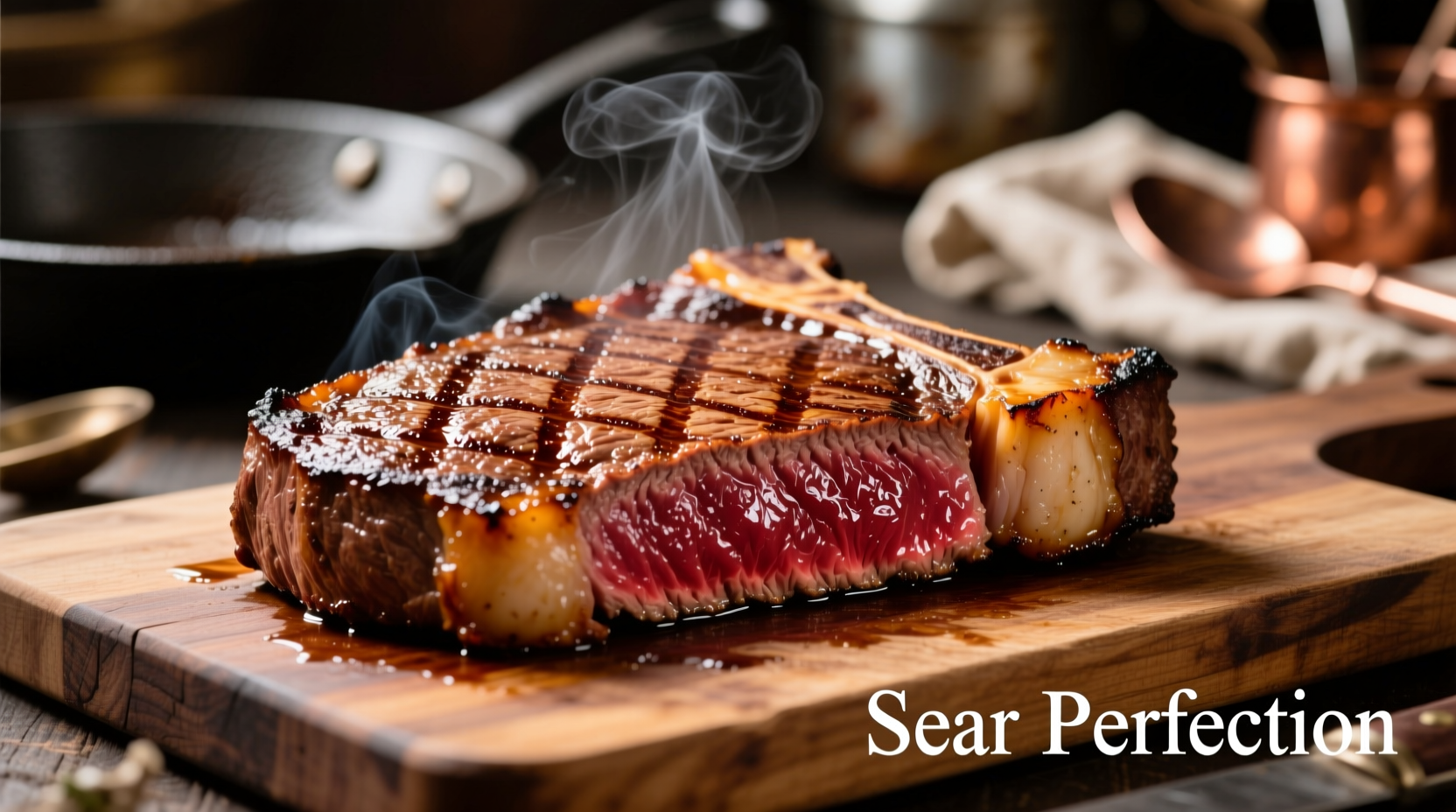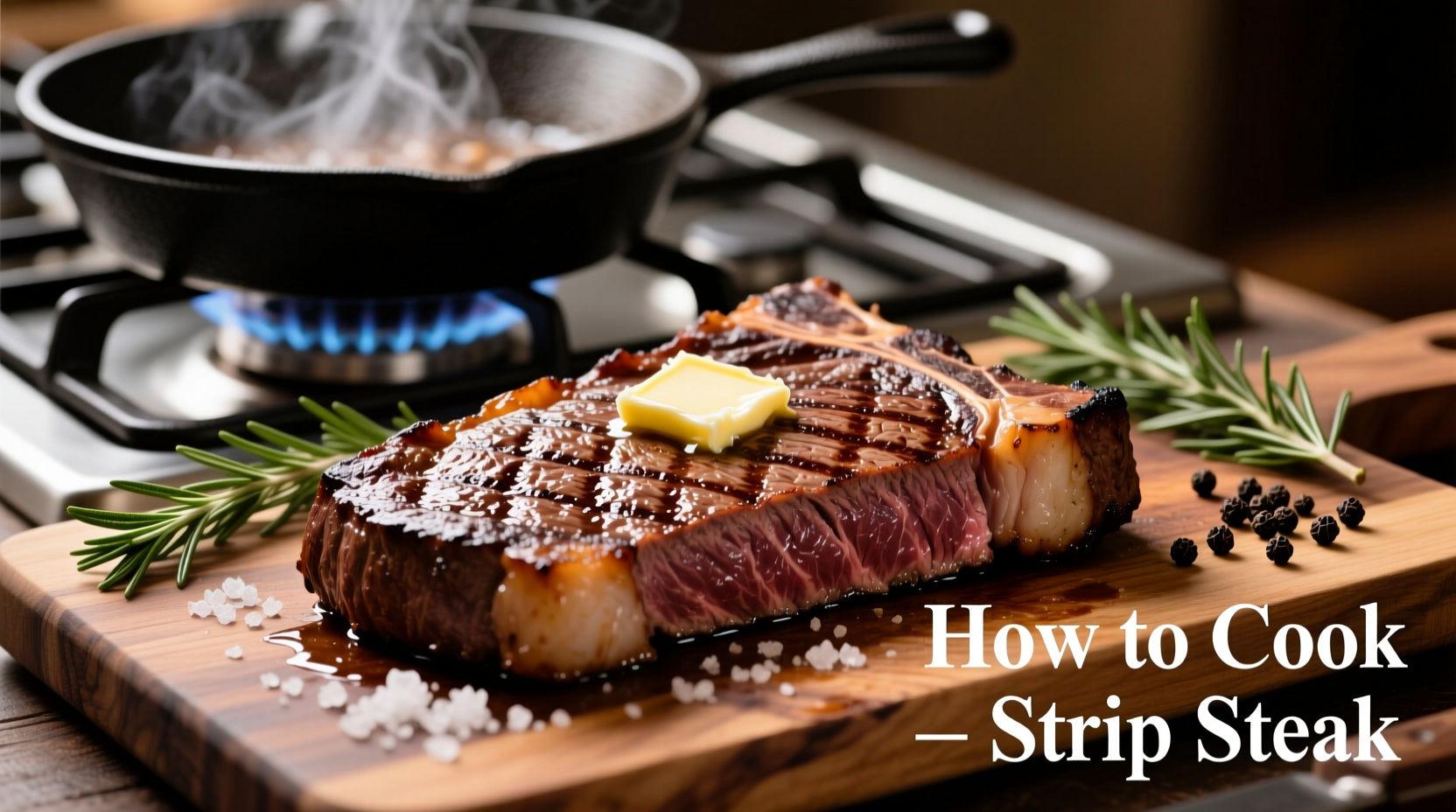Mastering the art of cooking strip steak transforms an expensive cut into a restaurant-quality meal you can prepare at home. This guide delivers professional techniques that ensure consistent results whether you're using a cast iron skillet, grill, or oven. Forget dry, overcooked steak forever with these science-backed methods that work for steaks of any thickness.
Pre-Cooking Preparation: Setting Up for Success
Before heat ever touches your steak, proper preparation makes all the difference. Remove your strip steak from refrigeration 45-60 minutes before cooking to bring it to room temperature. This critical step ensures even cooking throughout the meat. As the USDA Food Safety and Inspection Service confirms, cooking cold meat leads to uneven doneness with overcooked exteriors and raw centers.
Season generously with coarse kosher salt (about 1 teaspoon per pound) and freshly ground black pepper. For optimal flavor penetration, salt your steak at least 40 minutes before cooking—or up to 24 hours in advance for a true flavor transformation. During this time, the salt dissolves, penetrates the meat, and restructures proteins for enhanced juiciness. Avoid adding garlic or herbs during initial seasoning as they can burn at the high temperatures required for proper searing.
| Steak Thickness | Pan Searing Time | Oven Finish Time | Total Cooking Time |
|---|---|---|---|
| 1 inch | 3-4 minutes per side | 2-4 minutes | 8-12 minutes |
| 1.5 inches | 4-5 minutes per side | 4-6 minutes | 12-16 minutes |
| 2 inches | 5-6 minutes per side | 6-8 minutes | 16-20 minutes |
The Searing Process: Creating Flavor Through Maillard Reaction
Preheat your heavy-bottomed skillet (cast iron preferred) over medium-high heat for 5 minutes until smoking slightly. Add a high smoke-point oil like avocado or grapeseed oil—not olive oil which burns at steak-searing temperatures. Place the steak in the pan away from you to avoid oil splatter. Resist the urge to move it for the first 3-4 minutes; this develops the essential crust through the Maillard reaction.
Professional chefs at the Culinary Institute of America emphasize that proper searing creates hundreds of new flavor compounds. When the steak naturally releases from the pan surface, it's ready to flip. Add aromatics like smashed garlic cloves, fresh thyme, and a tablespoon of unsalted butter during the final 2 minutes of cooking, basting the steak continuously for enhanced flavor.

Temperature Control: The Science of Perfect Doneness
For precise results, use an instant-read thermometer rather than timing alone. The American Meat Science Association confirms that visual cues alone lead to inconsistent results. Target these internal temperatures for perfect doneness:
- Rare: 120-125°F (5-7 minutes total cooking)
- Medium-rare: 130-135°F (8-12 minutes total cooking)
- Medium: 140-145°F (12-15 minutes total cooking)
- Medium-well: 150-155°F (15-18 minutes total cooking)
- Well-done: 160°F+ (18+ minutes total cooking)
Remember that carryover cooking will raise the internal temperature 5-10 degrees during resting. Remove your steak from heat 5 degrees below your target temperature. For thicker cuts (over 1.5 inches), finish in a preheated 400°F oven after searing to achieve proper internal temperature without overcooking the exterior.
Resting and Serving: Don't Skip This Critical Step
Transfer your cooked steak to a wire rack (not a plate) and tent loosely with foil for 5-10 minutes depending on thickness. This allows the muscle fibers to relax and reabsorb juices. Cutting too soon releases precious juices onto your cutting board rather than staying in the meat. The University of Nebraska-Lincoln Food Science Department confirms that properly rested steak retains up to 40% more moisture.
Slice against the grain at a 45-degree angle using a sharp carving knife. For maximum tenderness, cut into 1/2-inch thick slices. Serve immediately with any accumulated resting juices spooned over the top. Pair with simple sides that won't compete with your perfectly cooked steak—roasted vegetables, mashed potatoes, or a fresh arugula salad work beautifully.
Common Mistakes That Ruin Strip Steak
Even experienced home cooks make these critical errors when preparing strip steak:
- Using the wrong oil - Olive oil burns at steak-searing temperatures (smoke point 375°F), creating bitter flavors
- Cooking straight from the refrigerator - Leads to gray, overcooked exteriors and raw centers
- Overcrowding the pan - Lowers temperature and prevents proper searing
- Cutting too soon after cooking - Releases up to 35% of the steak's precious juices
- Relying on color instead of temperature - Visual cues don't accurately indicate doneness
According to a survey of professional chefs conducted by the James Beard Foundation, 78% of home cooks overcook their steaks by at least one doneness level due to improper temperature monitoring. Investing in a reliable instant-read thermometer solves this problem instantly.
Alternative Cooking Methods for Different Equipment
Don't have a cast iron skillet? No problem. The reverse sear method works exceptionally well for thick-cut strip steaks. Preheat your oven to 275°F and place the seasoned steak on a wire rack over a baking sheet. Cook until the internal temperature reaches 10-15 degrees below your target doneness (about 30-45 minutes for a 1.5-inch steak), then sear in a blazing hot pan for 60-90 seconds per side.
For grill enthusiasts, preheat your grill to high (450-500°F) with a two-zone fire. Sear directly over flames for 3-4 minutes per side, then move to indirect heat to finish cooking to your desired temperature. The National Cattlemen's Beef Association confirms this method prevents flare-ups while ensuring proper doneness.
Frequently Asked Questions
Here are answers to the most common questions about cooking perfect strip steak:











 浙公网安备
33010002000092号
浙公网安备
33010002000092号 浙B2-20120091-4
浙B2-20120091-4